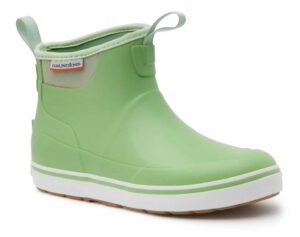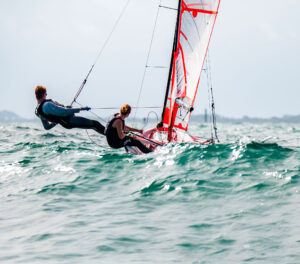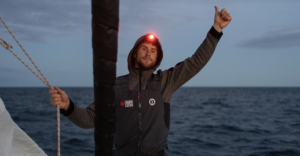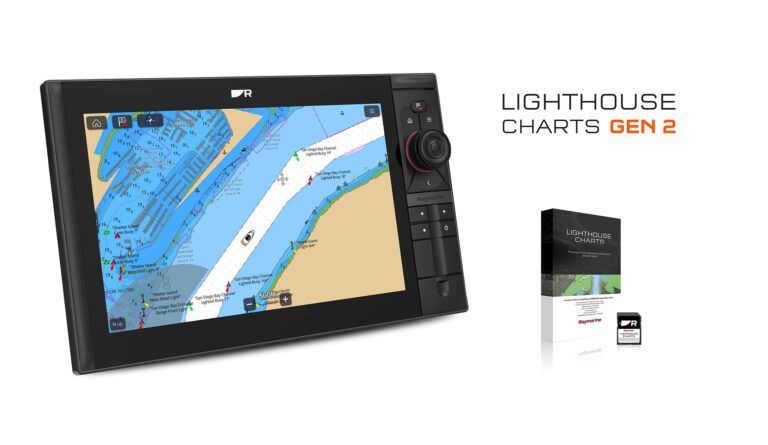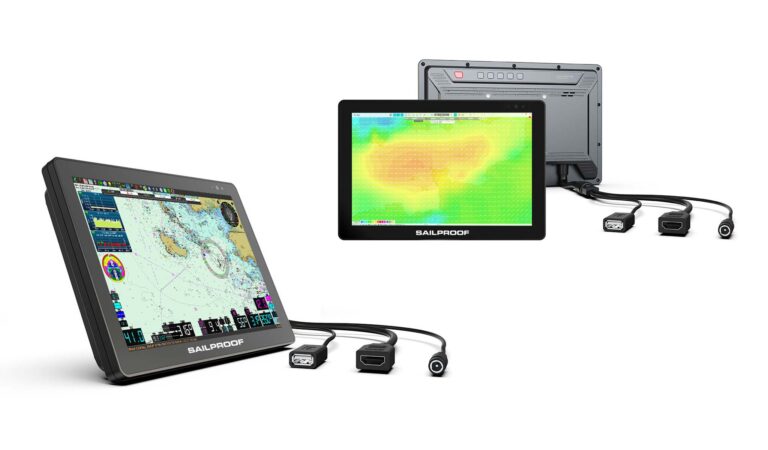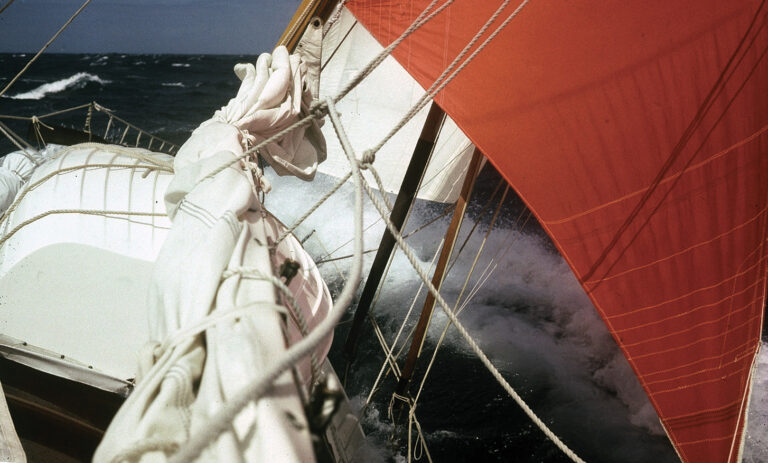
Today there are more devices than ever before that allow mariners to call for help when in distress, but how do they work, and which is the right one for you?
On March 30, 2014, the coordinates 179W were transmitted from Andrew Taylor’s AIS MOB device after he went overboard during the 2013-2014 Clipper Round the World Race. Taylor’s boat, the Derry-Londonderry-Doire, had been struck by a wave that swept the sailor overboard. He was 2,000 miles offshore in the North Pacific and an hour away from any other vessel. But he happened to have his AIS MOB unit in his pocket, and that led his shipmates back to his location. An hour and a half later, he was back onboard.
This is just one of hundreds of examples of sailors being saved by emergency devices. And it is a reminder that whether it is an EPIRB, PLB, SPOT signaling devices or an AIS MOB unit, every sailor who goes to sea should carry an emergency signaling device.
Types of Devices
There are several different types of signalling device, each designed for a specific purpose. Most sailors are familiar with the Emergency Positon Indicator Radio Beacon, aka EPIRB. These are registered to your specific vessel, and when they are activated they transmit your vessel’s information to the series of satellites that make up the international Cospas-Sarsat system. From there the information is beamed down to a Local User Terminal, sent to a mission control center and then to a rescue coordination center (such as the Coast Guard). The rescuers receive the information about your boat, such as the size, type, etc., your GPS coordinates, and if you have provided an emergency contact number, they can alert your friends/family to your situation. EPIRBs are typically mounted to a fixed position onboard your boat and are activated either when they are submerged or manually if there is an emergency onboard.

By contrast, AIS MOB devices, such as the MOB1 from Ocean Signal or the SmartFind series from McMurdo, are designed for the person, not the boat. These devices transmit your location to the AIS receivers on the boats around you, and also send out a GPS signal to satellites to alert authorities to your position. “What we have found in the last few years is that the attitude has changed,” says Sean McCrystal, marine and military marketing manager for the McMurdo Group. “When I started working it was all about the EPIRB. That changed quite a lot in the last few years. Focus has shifted to personal safety.” McCrystal credits a lot of this shift to stories such as that of Andrew Taylor and other mariners who have been plucked from the ocean thanks to their personal location devices.
[advertisement]Satelllite messaging devices like the Globalstar Spot and DeLorme InReach send a GPS signal when they are activated, alerting rescuers to your location, but can also be used to let your family and friends know you’re OK. “The SPOT provides an alternate solution beyond the traditional legacy emergency alert devices,” says Erica Kelt, public relations specialist with SPOT. “It offers outdoor enthusiasts a mechanism to reach emergency responders if required, but also allows them to stay in touch with family and friends, track waypoints and send predetermined messages via email and text.” Importantly, SPOT offers an SOS function that will notify local authorities if you are in trouble when activated.

While SPOT devices are one-way messaging systems that allow you to send pre-packaged messages, the DeLorme ups the ante by being a two-way system that allows you to not only send preplanned messages, but to communicate with friends, family, or a rescue team, using 160-character custom messages. “The big difference with having two-way emergency communication is the rescue station can let you know when your helicopter is coming, or if you just need a tow, where to send the boat,” says DeLorme’s Daniel McFetridge. Additionally, there is a software update for the inReach that will provide marine forecasts.
The Satellite Network
The Cospas-Sarsat satellite system is the key to EPIRBs and PLBs; without it your signal would go nowhere. It is comprised of a series of low-altitude Earth orbit search and rescue satellites and geostationary Earth orbit search and rescue satellites (referred to a LEOSAR and GEOSAR respectively) that monitor 406MHz distress signals. This network provides complete but non-continuous coverage of the Earth.
This is all about to change with the introduction of the MEOSAR—medium altitude Earth orbit—system. Cospas-Sarsat is currently upgrading its satellite system by placing search-and-rescue receivers (i.e., repeaters or transponders) on new GPS satellites operated by American, Russian (GLONASS) and European (GALILEO) navigation satellites that began launching into orbit in 2012.
“Beacons are going to change,” McMurdo’s Sean McCrystal says. “At the minute there are six or seven satellites around the world that are owned by different nations that make up the Cospas-Sarsat system. In the next few years, that six or seven will be 70 or 80. The whole concept of what these beacons are and what they do is going to change. It’s like changing from analog to digital.”
The additional satellites are going to beef up the ability of satellites to locate you like never before. “What MEOSAR means to your average user is that, at the minute you press the button and depending on where you are and where the satellite is, it might take five minutes or it might take an hour,” McCrystal says. “With MEOSAR the satellites will be returning service, so the sattelites will be able to send a message back to your beacon to let you know help is on the way. There will be so many satellites in orbit that they will be able to cross-reference your signal so even if you don’t have GPS they will be able to find you.” It is going to be a game changer in the field of search and rescue.
DeLorme’s device operates with the Iridium satellite network, whose propietary constellation consists of 66 low-earth-orbit satellites. “There are no dead spots like some of the other devices,” DeLorme’s McFetridge says. “With the Iridium network, if you can see the sky you’ve got a signal.”
Using Your Device
Like anything else on your boat, be it a chartplotter, your AIS or that fancy new stereo system, having the equipment onboard will do you no good if you don’t know how to use it. “You need to know how to use what you’re using,” says McCrystal. “When [Andrew] Taylor fell off, he set his McMurdo SmartFind AIS beacon to test and not activate at first. For AIS units, you can practice with them, make sure you know what you’re doing. In traditional sailing, particularly with the guys that are doing professional sailing, the MOB drills are taught from the beginning, but we don’t treat any other safety equipment like that. We don’t treat life jackets like that, we don’t treat life rafts like that. If Taylor had had an EPIRB only with him, he’d be dead. He was too far away. He had the S10 AIS unit and that flashed up on the boat he fell off, the crew saw the signal and they went to him. If he had been traveling on his own, he would have died.”
[advertisement]Buying an EPIRB or a PLB is only half the battle. “When you buy one, I always say you’re half way there,” says Nichole Kalil, public relations and media specialist for ACR. “The other half is getting it registered with NOAA. If, God forbid, you set it off in the case of an emergency, the rescue folks are going to go to that EPIRB or PLB database and know your wife’s name is Mary Jane and they’re going to have information on you. If its an EPIRB you’re going to register your vessel information. As always, the more information the better.”
Also, it’s not all about you. As recent incidents have shown, it is also for the safety of those who are coming to your rescue. The amount of time a helicopter has to stay in the air, how rough the seas are as divers jump into an inky, stormy sea—the faster and more accurately you can be found helps everyone. “Referring to recent history with what happens when you don’t have an EPIRB—its not just for your sake, but it helps the search and rescue people, because when they are out there looking for you, they’re endanger their lives,” says ACR’s Kalil. “Its not just about you and your boat, its about helping them find you.”
Also, there is a chance that in the near future carrying and registering an EPIRB or PLB might not just be a safe choice but a legal requirement. After Florida teens Austin Stephanos and Perry Cohen were declared lost at sea this past summer, the concept of boat safety and distress signaling was pushed into the public eye. Austin’s parents have since started the Austin Blu Foundation, which is dedicated to raising awareness, providing education, making tools and technology available to boaters—all of which will help prevent near- shore and off-shore boating accidents in Florida. Recent legislation there provides incentives in the form of reduced insurance premiums to carry PLBs and EPIRBs.
Like carrying flares, liferafts or PFDs, it doesn’t matter how far from shore you sail or the extent of your voyaging. For the sake of you, your crew, your boat and those who come to rescue you, all sailors should carry a PLB, EPIRB, and AIS-MOB device or, better yet, a combination of those. Not all sailors need the latest and greatest devices, every sailor should carry something to help in a search and rescue situation. While it is not currently required by law to carry a distress signaling device, having a boat without one is like having a car without airbags. So look at your cruising habits, talk to an expert and find out which device is the one for you.
Buyer’s Guide

ACR GlobalFIX V4 EPIRB
Recently approved by the FCC, the V4 is the latest EPIRB from ACR. To ensure that help comes when neeed, the unit is packed with multiple redundancies. When activated, the internal GPS fixes your location, while your coordinates are broadcast on the 406 MHz distress signal to the Cospas-Sarsat network. The 406 MHz signal can be used to triangulate your position via the satellite system, and your coordinates are broadcast via a 121.5 MHz homing signal for further assistance. $469.99. ARC Artex; acrartex.com

Ocean Signal rescueME MOB1
The MOB1 is a personal AIS MOB device that features an integrated DSC transmitter for digital selective calling. When activated, MOB1 transmits an alert to all AIS receivers and AIS-enabled plotters in your area, and the integrated GPS helps to make sure your location is accurate for any vessels that may be assisting. In addition, the MOB1 has the ability to activate the DSC alarm on your boat’s VHF, alerting your crew to the situation. The MOB1 is easily attached to a life jacket, and the company claims it is the industry’s smallest AIS MOB unit. $299. Ocean Signal; oceansignal.com

McMurdo Smartfind S20
The McMurdo Smartfind S20 is a compact AIS-MOB device that uses a high precision GPS transponder to broadcast your poisition and your personal identification number back to your boat’s chartplotter, allowing the rest of your crew (and other vessels in VHF range) to see precisely where you are. The device will continue to transmit your location for 24 hours. The S20 comes with manual activation, but it can be fitted to compatible lifejackets so that it is set off when the life jacket is deployed. $299. McMurdo; mcmurdogroup.com

SPOT Gen3
While mainly a messaging and tracking system, great for letting your friends or fellow cruisers know where you are and that all is well, SPOT is also enabled with an emergency SOS setting for search and rescue. With the push of a button, the GEOS International Emergency Response Coordination Center will be alerted of your GPS coordinates and will send those coordinates out to local authorities. $169.95. SPOT; findmespot.com

DeLorme inReach Explorer
The DeLorme inReach has a built-in digital compass in case your electronics go down, and allows you to plan routes with waypoints and share them with family and friends, or fellow cruisers, so they can keep an eye on your progress. Like the SPOT, it allows you to send and receive text messages for pre-programed cell phones and post updates on social media. And, most importantly in an emergency situation, it has an SOS feature that will allow you to communicate back and forth with the company’s proprietary 24/7 rescue monitoring center. $379.95. DeLorme; inreachdelorme.com
May 2016

